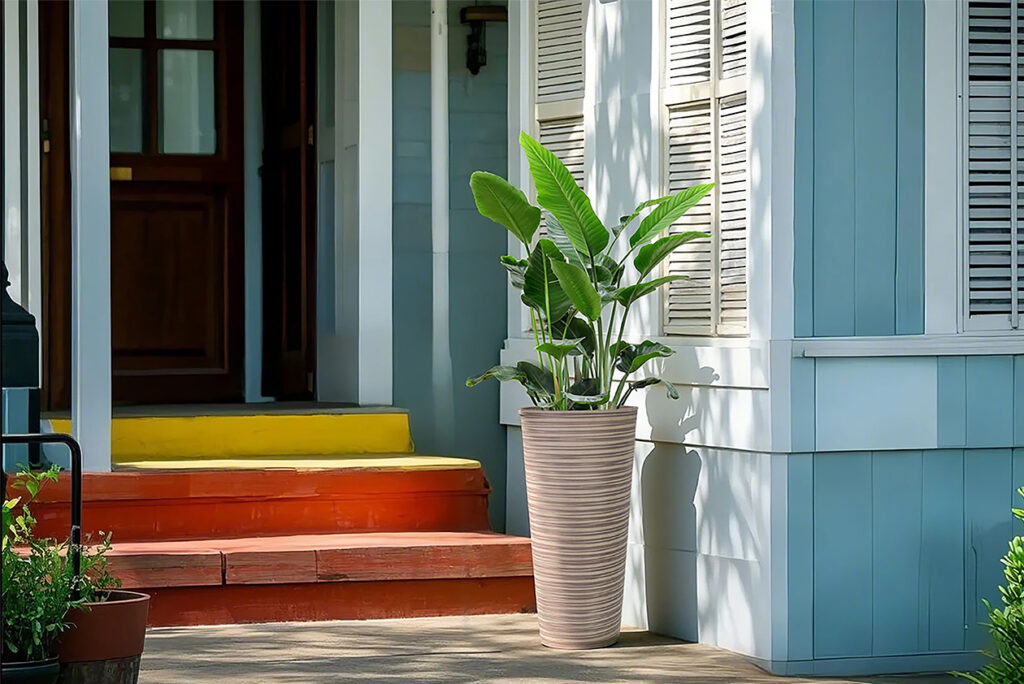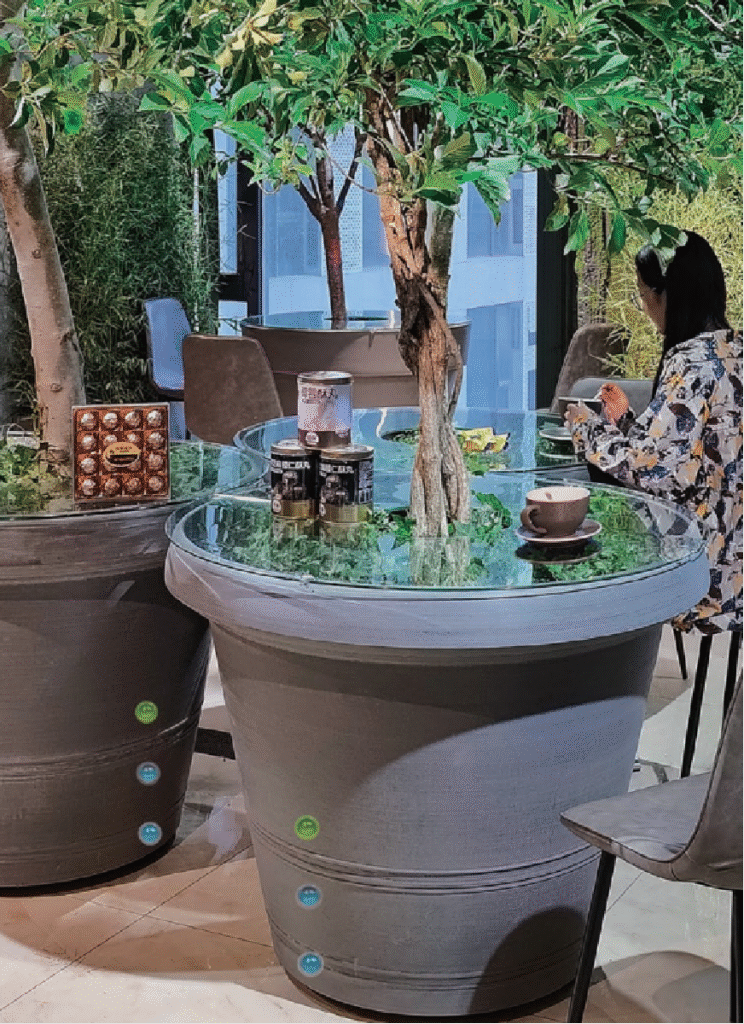How to Choose Large Outdoor Flower Pots? 8 Key Considerations for Creating a Perfect Garden
When creating an outdoor landscape, large flower pots are not only the “homes” for plants but also the soul of space decoration. They can add an artistic touch to courtyards, terraces, or balconies. However, if chosen improperly, they may also limit the growth of plants or disrupt the harmony of the landscape style. GreenShip has summarized 8 key considerations for selecting large outdoor flower pots, helping you easily avoid pitfalls and create a healthy and aesthetically pleasing green space.
Ⅰ. The Material Determines the Lifespan: Only by Making the Right Choice Can It Withstand Wind and Rain
Outdoor flower pots need to withstand long-term exposure to sunlight, wind, and rain, so the material is the primary factor to be considered:
Terracotta/Ceramic: It has good air permeability and is suitable for plants with sensitive roots (such as succulents). However, it is heavy and fragile, and its use in low-temperature areas should be avoided.
Concrete/Cement: It is sturdy and durable with a rugged style, but it is difficult to move. It is necessary to ensure that there are drainage holes at the bottom.
Resin/Plastic: It is lightweight and resistant to freezing, making it suitable for rainy or cold climates. However, it is prone to fading and aging after long-term exposure to the sun.
Metal (such as cast iron, aluminum): It has a strong modern feel. You need to choose the type with an anti-rust coating to prevent the roots of plants from being burned by high temperatures in summer.
Wood: It has a natural and warm feeling, but it requires anti-corrosion treatment and regular maintenance to prevent decay.
Ⅱ. Size and Capacity: Match the Needs of the Plants
Root Space: For large plants (such as shrubs and small trees), flower pots with a depth of at least 50 cm are required to ensure that the roots can stretch out.
Growth Expectation: Reserve enough space for the plant’s growth in the next 1-2 years to avoid the need for frequent repotting.
Placement Scenario: Measure the available area of the courtyard or balcony. It is recommended that the diameter of the flower pot should not exceed one-third of the width of the space to avoid overcrowding.
III. The Drainage System: The Key to Preventing Root Rot
In an outdoor environment, there is a high risk of waterlogging, so special attention should be paid to the following:
Bottom Drainage Holes: There should be at least 2 to 4 holes with a diameter of not less than 1 cm to prevent blockage.
Drainage Layer Design: Lay ceramsite or crushed stones (about 5 cm thick) at the bottom of the flower pot to improve air permeability.
Be Cautious When Choosing Decorative Pots Without Holes: If you prefer enclosed flower pots, you can put the plant together with its seedling pot inside, which makes it convenient to control the water level.
Ⅳ. Climate Adaptability: Choose the Style According to Local Conditions
Rainy Areas: Choose materials with fast drainage (such as terracotta), and avoid using wood that has strong water absorption and is prone to mildew.
Dry and Hot Areas: Resin or metal pots need to be matched with soil with good water retention properties, or wrap heat insulation materials outside the pot.
High-cold Areas: Avoid materials such as ceramic and concrete that are prone to freezing and cracking, and give priority to resin pots that are resistant to low temperatures.
Ⅴ. Style Matching: Make the Flower Pot a Work of Art
Modern and Simple Style: Solid-color metal pots, geometric-shaped cement pots.
Natural and Rural Style: Aged pottery pots, resin pots with woven textures.
Retro Industrial Style: Iron pots with a rusty color, pots with rivet decorations.
Suggestion: The color of the flower pot can echo the exterior wall of the building and outdoor furniture, or create a visual focal point through color contrast.

Ⅵ. Budget and Maintenance Costs
One-time Investment: Concrete and stone pots are relatively expensive but have a long lifespan.
Low-cost Solution: Plastic pots are cost-effective and suitable for short-term use or seasonal plants.
Hidden Costs: Wooden flower pots need to be regularly painted with preservatives, and ceramic pots need to be moved indoors in winter to prevent freezing.
VII. Additional Functions: Practical Details to Enhance the Experience
Pulley Design: It is convenient to move extra-large flower pots (such as those for planting citrus trees).
Automatic Irrigation System: It is suitable for gardening enthusiasts who often go on business trips.
Multi-layer Combination: It saves space and creates a three-dimensional green wall.

VIII. Environmental Protection and Sustainability
Give priority to recyclable materials. GreenShip uses the technology of combining 1400 – year – old royal – grade Jun porcelain clay with polymer resin, with a patented formula. Made of stone material, it’s anti – aging. It can reduce the carbon footprint during the production process and contributing to a green life.
Selecting large outdoor flower pots is an art that balances aesthetics and functionality. Starting from the needs of plants, combining with the climate, space, and budget, you can find the best choice. GreenShip provides a variety of styles and materials of outdoor flower pots. Click on GreenShip to explore more inspiration and let your garden radiate lasting vitality!
